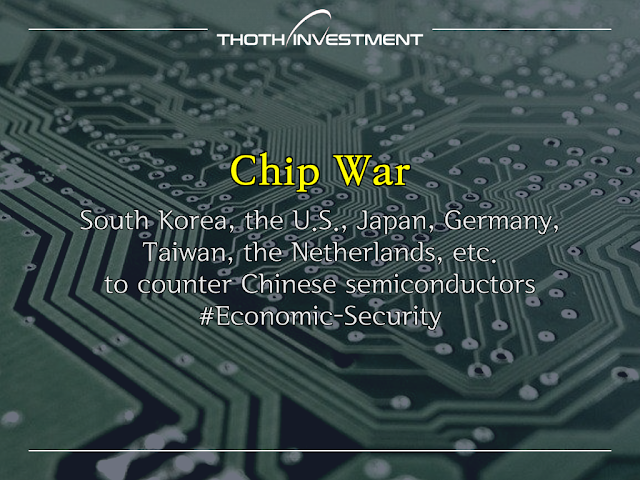South Korea's Top 25 Companies by Market cap; What are Chaebols?
South Korea's Top 25 Companies by Market cap
What are Chaebols?
South Korea became an economic powerhouse after the Korean War with rapid industrialization, known as the "Miracle on the Han River".
The top 25 largest South Korean companies by market capitalization on February 7, 2024, in U.S. dollars (USD), as provided by CompaniesMarketCap.com, as published on Visualcapitalist.com.
Includes domestic stocks listed on the KRX, as well as U.S. stocks listed on U.S. exchanges, such as Coupang.
 |
| South Korea's Top 25 Companies by Market cap |
Top 25 Companies in South Korea
At the top of the list is Samsung Electronics. With a market capitalization of $375 billion, it's larger than the GDP of Qatar.
Samsung is known for producing smartphones, white goods, and semiconductors, with its most profitable segment being semiconductors, which it supplies to big names like Nvidia, Qualcomm, and IBM.
With projected 2023 revenue of nearly $197 billion, it is the world's second-largest electronics company after Apple (APPL:US).
In addition to Samsung Electronics, the Samsung Group includes Samsung Biologics (Samsung's biotechnology division), Samsung SDI (electronics and secondary battery manufacturing), and Samsung Life (South Korea's largest insurer).
LG Group (formerly Lucky-Goldstar) is another South Korean conglomerate. It includes LG Chem, LG Energy Solutions, and more. Hyundai Motor and Kia are also among the top 25 largest market capitalization companies in South Korea.
 |
| Korea Exchange(KRX) |
- Samsung Electronics : $375B
- SK Hynix : $72B
- LG Energy Solution : $68B
- Hyundai Motors : $45B
- Samsung Biologics : $44B
- Kia : $34B
- Celltrion : $28B
- LG Chem : 26B
- POSCO : $26B
- Coupang : $26B
A brief history of South Korea's Chaebol system
Chaebols (family-owned conglomerates) have played a crucial role in South Korea's rapid economic growth since the 1960s. Government support and credit during post-war reconstruction allowed them to invest heavily in key industries such as shipbuilding, electronics, and automobiles, contributing significantly to the country's export-oriented growth model.
At the same time, the enormous size and influence of the chaebol has fostered monopolistic tendencies in the economy, stifling competition in certain sectors, hindering the growth of small and medium-sized enterprises, and potentially leading to inefficiencies.
Critics argue that the chaebol system can exacerbate income inequality in South Korea, with wealth concentrated in the hands of the founding families and top executives.
The concept of family-owned conglomerates is not unique to South Korea; during Japan's colonial rule of Korea (1910-1945), powerful family-controlled businesses called chaebols also existed in Japan. The structure and influence of these chaebols may have indirectly influenced the development of South Korean chaebols.
Powered by, THOTH Investment
.webp)



Comments
Post a Comment